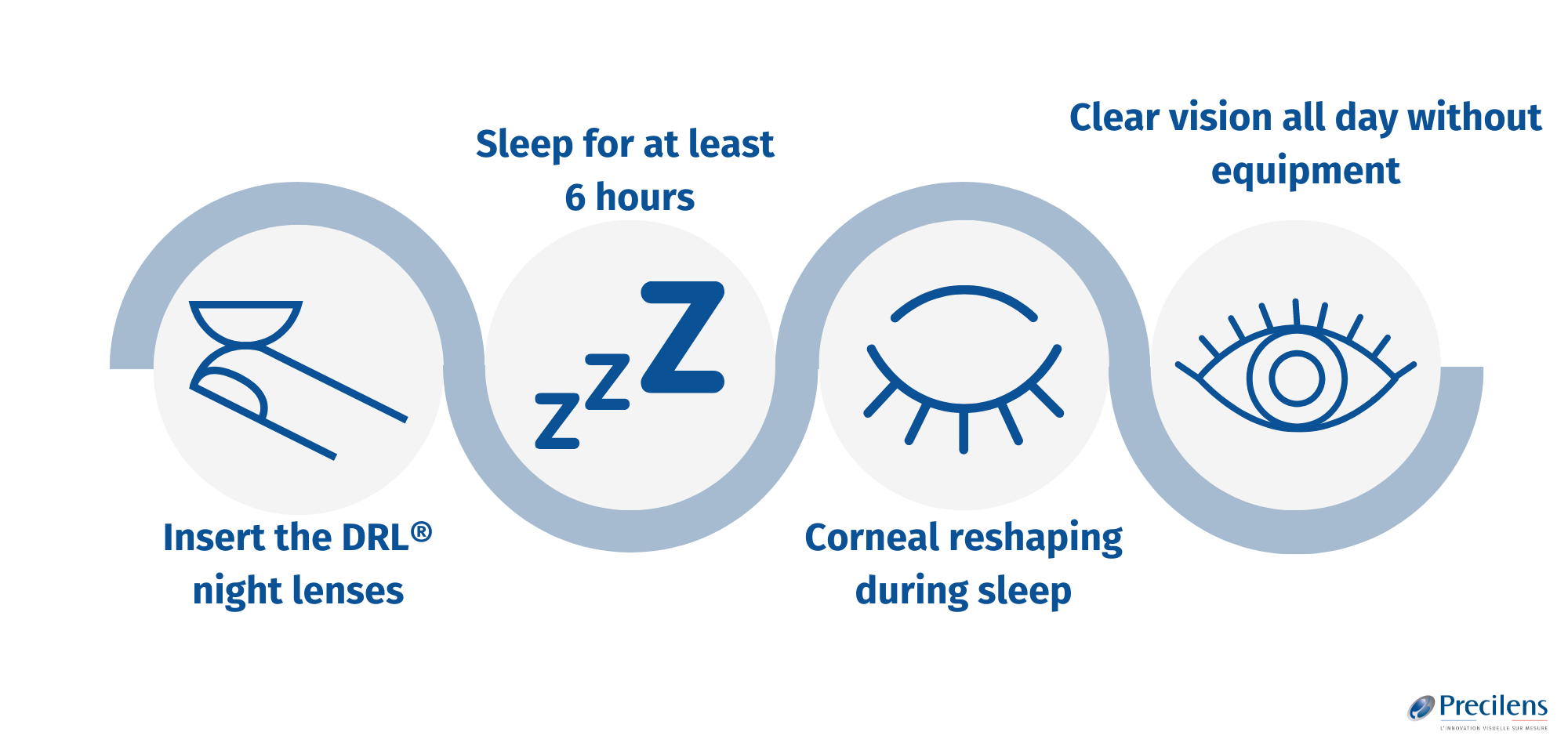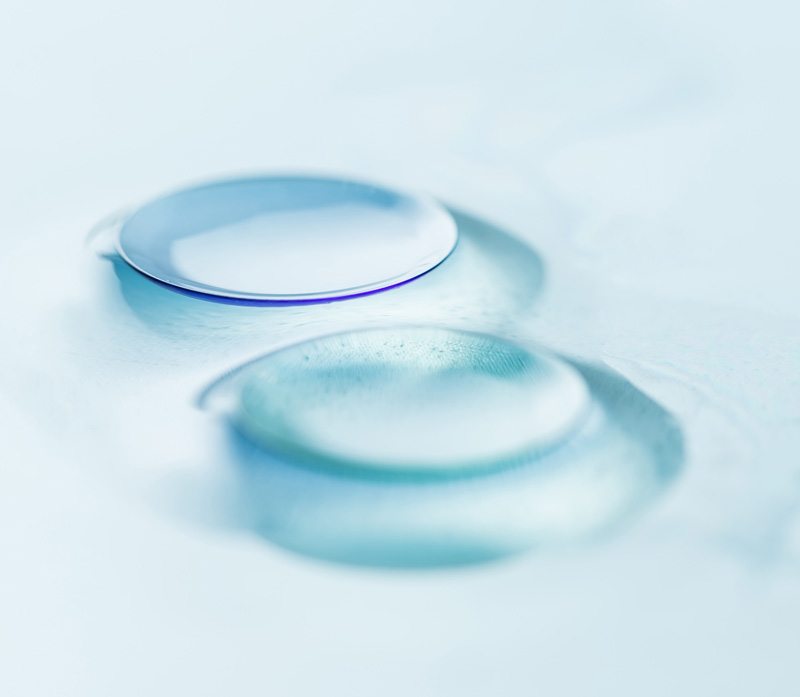
It is now possible to correct your visual disorder during sleep to see naturally clear during the day (without the need for glasses or lenses) with orthokeratology lenses, also called night lenses.
DRL® night lenses, designed and manufactured by the French Precilens laboratory, accurately and individually correct myopia, hyperopia, astigmatism, and presbyopia, allowing wearers to enjoy freely their favorite activities!
According to the Brien Holden Institute, 5 billion individuals will be affected by myopia by 2050, including 10% of the population that will be highly myopic (-6.00 diopters and beyond). Moreover, 40% of French people are affected by this eye pandemic, compared to 20% ten years ago according to the SNOF. As a result, more and more people need optical solutions, available in different forms: eyeglasses, night or day contact lenses (soft or gas permeable), or for some, laser surgery.
In this sense, the Precilens laboratory, which has more than 40 years of existence, has created the DRL® range of night lenses (in addition to its various tailor-made specialty contact lens ranges) to address this societal issue, which evolved since the global lockdown in 2020. In fact, this has naturally led to an overconsumption of screens with professional or school activities carried out on computers or tablets. This approach is therefore in the context of population’s sight global deterioration. It should also be noted that strong myopia can generate cataract, retinal detachment, glaucoma or AMD.

So, if you are tired of wearing eyeglasses, day lenses (daily, monthly, etc.) and are not eligible for laser surgery, another alternative is available to you: night lenses. Safe and painless, night lenses (or orthokeratology lenses) are:
- non-invasive, i.e. no incision
- reversible, you can therefore decide to change the correction mode at any time, without your sight having been altered.

Although night lenses are still not widespread in France, they actually exist since the 1960s, although many ophthalmologists were timid about the subject initially because they were still unaware, 80 years ago, of the action of this lens on the cornea. Since then, several studies have shown that it is possible to act on the surface of the cornea without deforming it, and have attested to the effectiveness of night lens treatment to correct any ametropia for people wishing to free themselves from visual equipment during the day. Night lenses are also very common in China and in the United States (which are the most myopic).
There are different ranges of night lenses to correct different visual defects, precisely and completely customized:

DRL®
dedicated to myopia up to -7.00 diopters, hyperopia up to +4.00 diopters, astigmatism up to -4.00 diopters

DRL® Near
dedicated to presbyopia up to +3.00 diopters

DRL® night lenses are medical devices whose adaptation must be prescribed by an ophthalmologist. DRL® lenses are special lenses with a high permeability material, allowing for good oxygenation of the eye at night. Impeccable hygiene is also required to ensure safe wearing.
For more details on the complete DRL® night lens range, visit the dedicated page.



